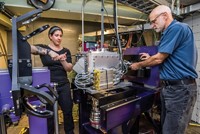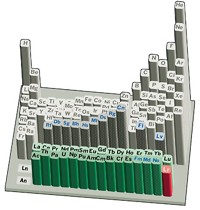Advertisement
Grab your lab coat. Let's get started
Welcome!
Welcome!
Create an account below to get 6 C&EN articles per month, receive newsletters and more - all free.
It seems this is your first time logging in online. Please enter the following information to continue.
As an ACS member you automatically get access to this site. All we need is few more details to create your reading experience.
Not you? Sign in with a different account.
Not you? Sign in with a different account.
ERROR 1
ERROR 1
ERROR 2
ERROR 2
ERROR 2
ERROR 2
ERROR 2
Password and Confirm password must match.
If you have an ACS member number, please enter it here so we can link this account to your membership. (optional)
ERROR 2
ACS values your privacy. By submitting your information, you are gaining access to C&EN and subscribing to our weekly newsletter. We use the information you provide to make your reading experience better, and we will never sell your data to third party members.
Physical Chemistry
Heavy Element Gets Weighed
Ion-trap mass spec technique allows direct weighing of nobelium isotopes, a first for a transuranium element
by Elizabeth K. Wilson
February 15, 2010
| A version of this story appeared in
Volume 88, Issue 7
With an ingenious ion-trap device, researchers have directly weighed the mass of several isotopes of nobelium—the first such measurements of an element heavier than uranium (Nature 2010, 463, 785). Until now, the masses of very heavy elements could only be inferred from the masses of their radioactive decay products. An international team led by Michael Block of the Institute for Heavy-Ion Research (GSI), in Darmstadt, Germany, recorded the masses of 252No, 253No, and 254No, which have half-lives on the order of seconds. The researchers used an ion-trap mass spectrometer that receives and weighs single atoms as soon as they’re produced. The mass of a nucleus includes not only protons and neutrons but also the binding energies that hold them together, the researchers point out. Without direct mass measurements, calculated binding energies can be quite uncertain and make it difficult to explore the nuclear behavior of transuranium elements. Thus, the new method could aid the study of elements approaching the “island of stability,” an uncharted region of the periodic table around 120 protons and 184 neutrons where elements are expected to have half-lives of minutes or even hours.





Join the conversation
Contact the reporter
Submit a Letter to the Editor for publication
Engage with us on Twitter